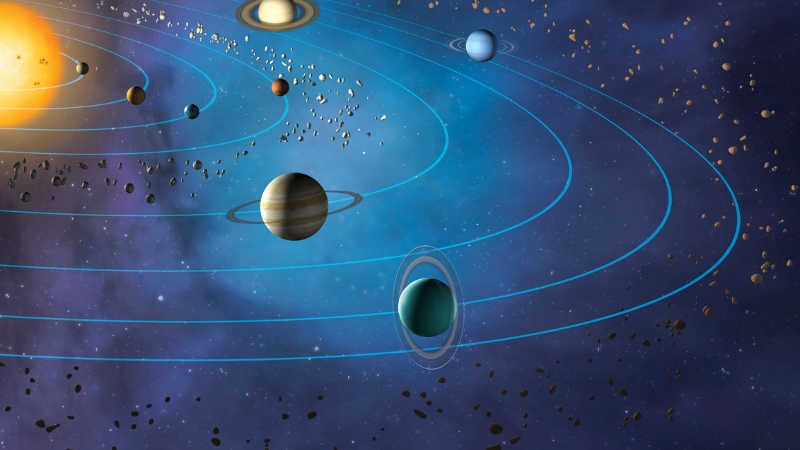Ah, the wonders of the night sky! There’s something truly magical about gazing up at the stars and planets, isn’t there? Whether you’re a seasoned stargazer or a newcomer to the cosmic scene, understanding which planets are visible tonight can enhance your celestial experience. So, let’s embark on a journey through the cosmos and uncover the secrets of tonight’s planetary parade!
Understanding Planetary Visibility
Before we dive into identifying specific planets, let’s take a moment to understand the mechanics behind planetary visibility. You see, it’s not just about randomly scanning the sky; there’s a method to the madness.
The mechanics of planetary visibility
Planetary visibility is influenced by two main factors: orbital dynamics and apparent magnitude. Imagine each planet as a performer on a celestial stage, with its orbit determining when and where it appears in our night sky. Additionally, the apparent magnitude of a planet refers to its brightness as seen from Earth. Planets with higher magnitudes are easier to spot, while fainter ones may require keen observation skills and optimal conditions.
Factors influencing visibility
Now, let’s talk about the nitty-gritty details that affect planetary visibility. Time of year and location play crucial roles in determining which planets grace our night sky. For instance, some planets may be visible only during certain seasons or from specific latitudes. Moreover, atmospheric conditions, such as light pollution and weather patterns, can either enhance or obscure planetary visibility.
Identifying Planets Tonight
Now that we’ve laid the groundwork, let’s get down to business and identify which planets are putting on a show tonight.
Overview of the current planetary lineup
Picture this: you step outside on a clear night, armed with nothing but your curiosity and perhaps a trusty stargazing app. What celestial wonders await you? Well, it depends on the time and your location, but chances are you’ll spot at least a few of our neighboring planets gracing the heavens.
Tools and resources for stargazers
Gone are the days of relying solely on star charts and telescopes (though they’re still valuable tools!). Nowadays, we have a plethora of smartphone apps and online resources at our disposal to help navigate the night sky with ease. Personally, I swear by [insert favorite stargazing app here], which not only identifies planets but also provides real-time updates on celestial events.
Tips for observation
Now, here’s where the fun begins. Timing is everything when it comes to planetary observation. While some planets may be visible shortly after sunset, others may require staying up past midnight for the best views. Additionally, familiarizing yourself with prominent constellations can serve as handy reference points for locating planets.
Highlighting Tonight’s Planetary Parade
Alright, let’s meet the stars of tonight’s show: Mercury, Venus, Mars, Jupiter, and Saturn.
Mercury: The elusive messenger
Ah, Mercury, the trickster of the celestial realm. Spotting this speedy planet can be quite the challenge, as it never strays too far from the blinding glare of the Sun. My best tip for catching a glimpse of Mercury? Look low on the horizon just after sunset or before sunrise, when the sky is at its darkest.
Venus: The brilliant beacon
If there’s one planet that knows how to steal the spotlight, it’s Venus. Known as the “Evening Star” or the “Morning Star,” depending on its appearance, Venus dazzles observers with its radiant glow. Keep an eye out for Venus in the western sky after sunset or the eastern sky before sunrise—it’s hard to miss!
Mars: The red wanderer
Mars, the mighty god of war, commands attention with its fiery red hue. While not as bright as Venus, Mars still stands out among the stars. Look for its distinct reddish glow in the eastern sky during the early hours of the night.
Jupiter and Saturn: The gas giants
Last but certainly not least, we have Jupiter and Saturn, the dynamic duo of the outer solar system. These gas giants never fail to impress, especially when viewed through a telescope. Keep an eye on the southeastern sky to catch a glimpse of Jupiter’s bright presence, while Saturn shines slightly to its left.
Beyond the Planets: Additional Celestial Delights
But wait, there’s more to the night sky than just planets! From the ever-changing phases of the Moon to the twinkling stars of the Milky Way, there’s always something new to discover.
Lunar observations
Few sights rival the beauty of a full moon hanging low on the horizon, casting an ethereal glow over the landscape. Keep track of lunar phases to witness the Moon’s transformation throughout the month, from slender crescents to luminous orbs.
Bright stars and constellations
Take a moment to admire the stars that have guided humanity for centuries. Whether it’s the familiar shape of Orion or the mystical allure of the Pleiades, each constellation tells a story written in the stars.
Meteor showers and other transient events
Keep an ear to the cosmic grapevine for news of upcoming meteor showers or other transient celestial events. There’s nothing quite like witnessing a shooting star streak across the sky, leaving a trail of stardust in its wake.
Conclusion
As we bid adieu to tonight’s celestial spectacle, let’s reflect on the wonders we’ve encountered and the mysteries that still await us. Whether you’re a seasoned stargazer or a curious newcomer, the night sky holds endless possibilities for exploration and discovery. So, grab your telescope, don your favorite stargazing attire, and let’s continue our journey through the cosmos together. After all, the universe is waiting to be explored—what are you waiting for?



